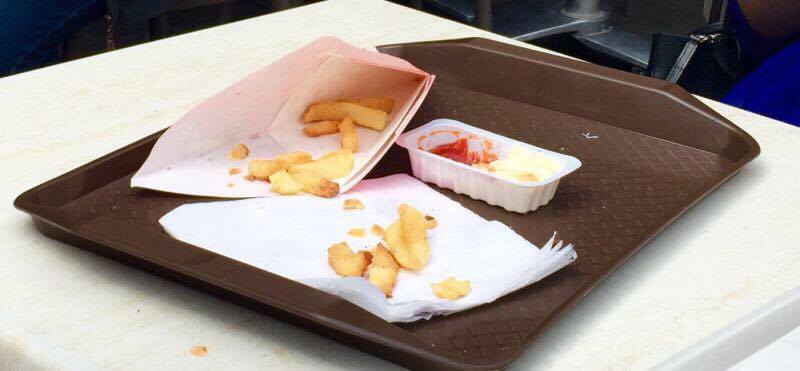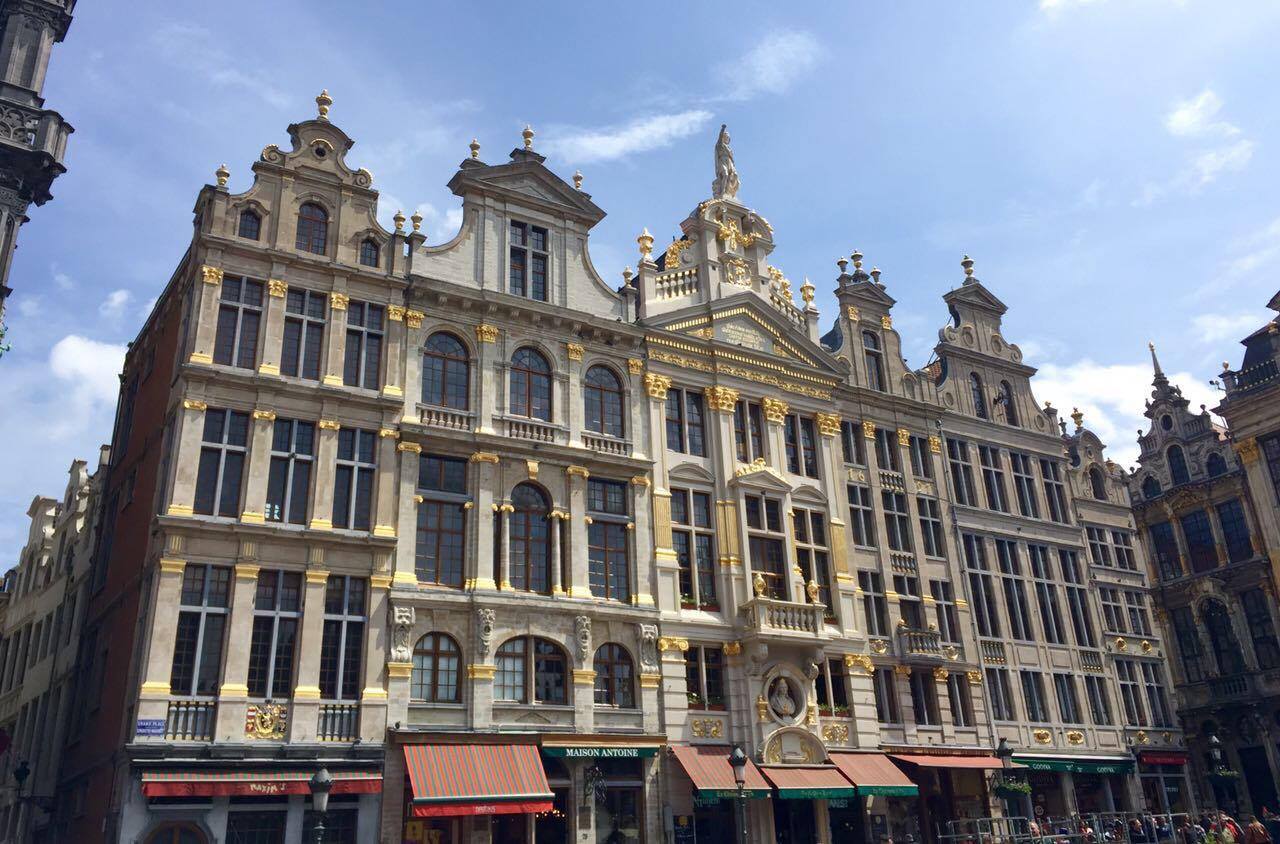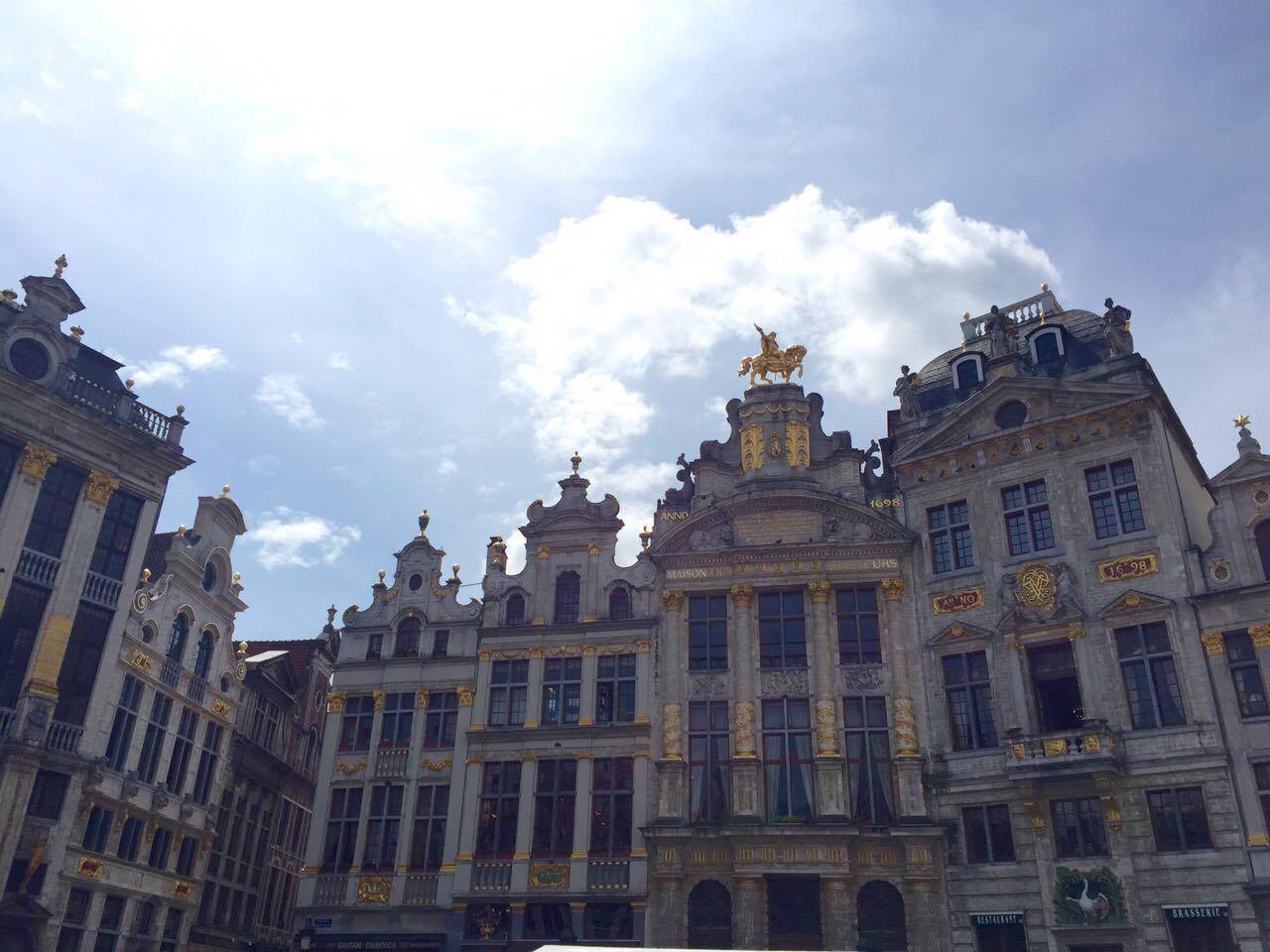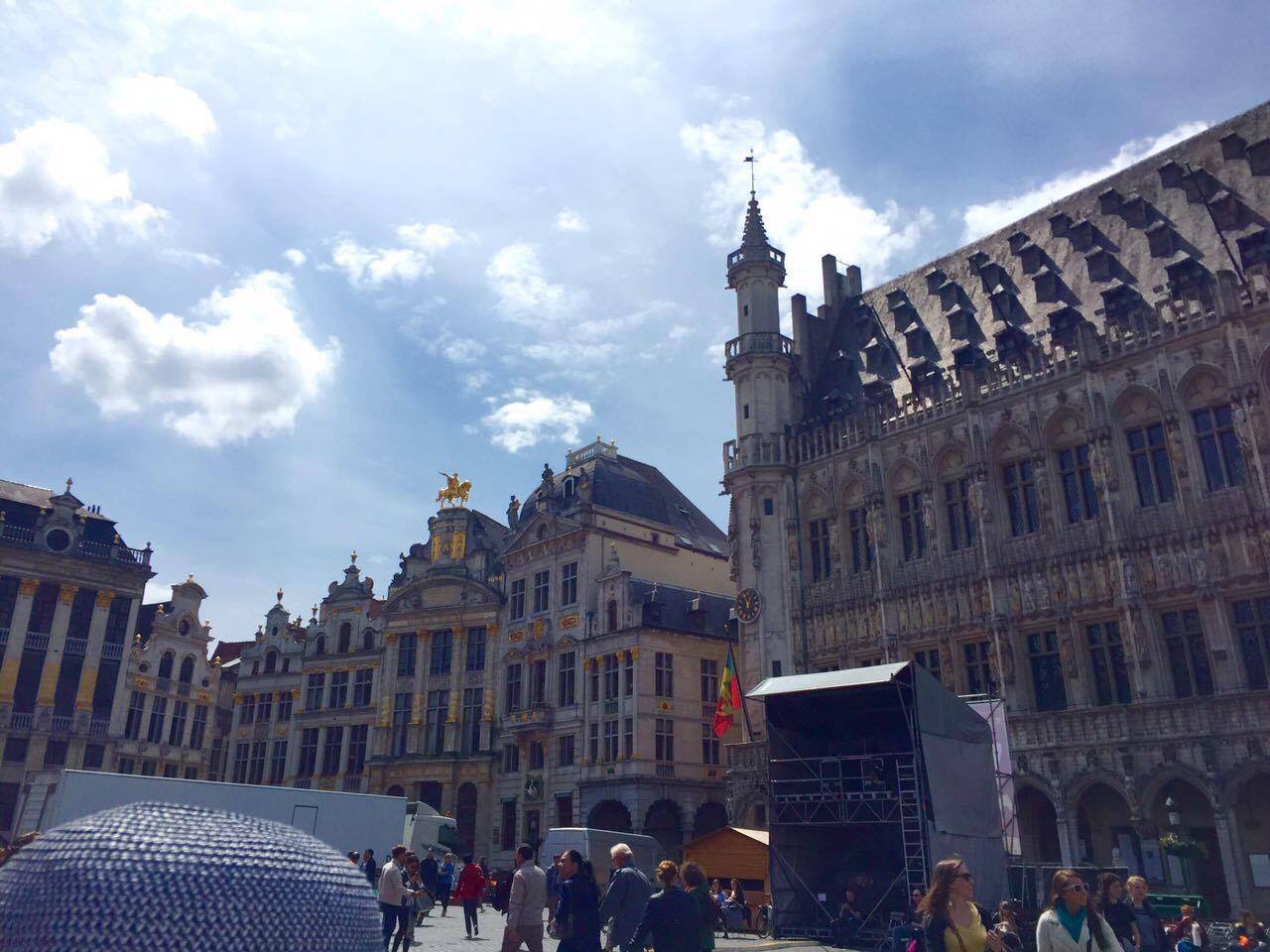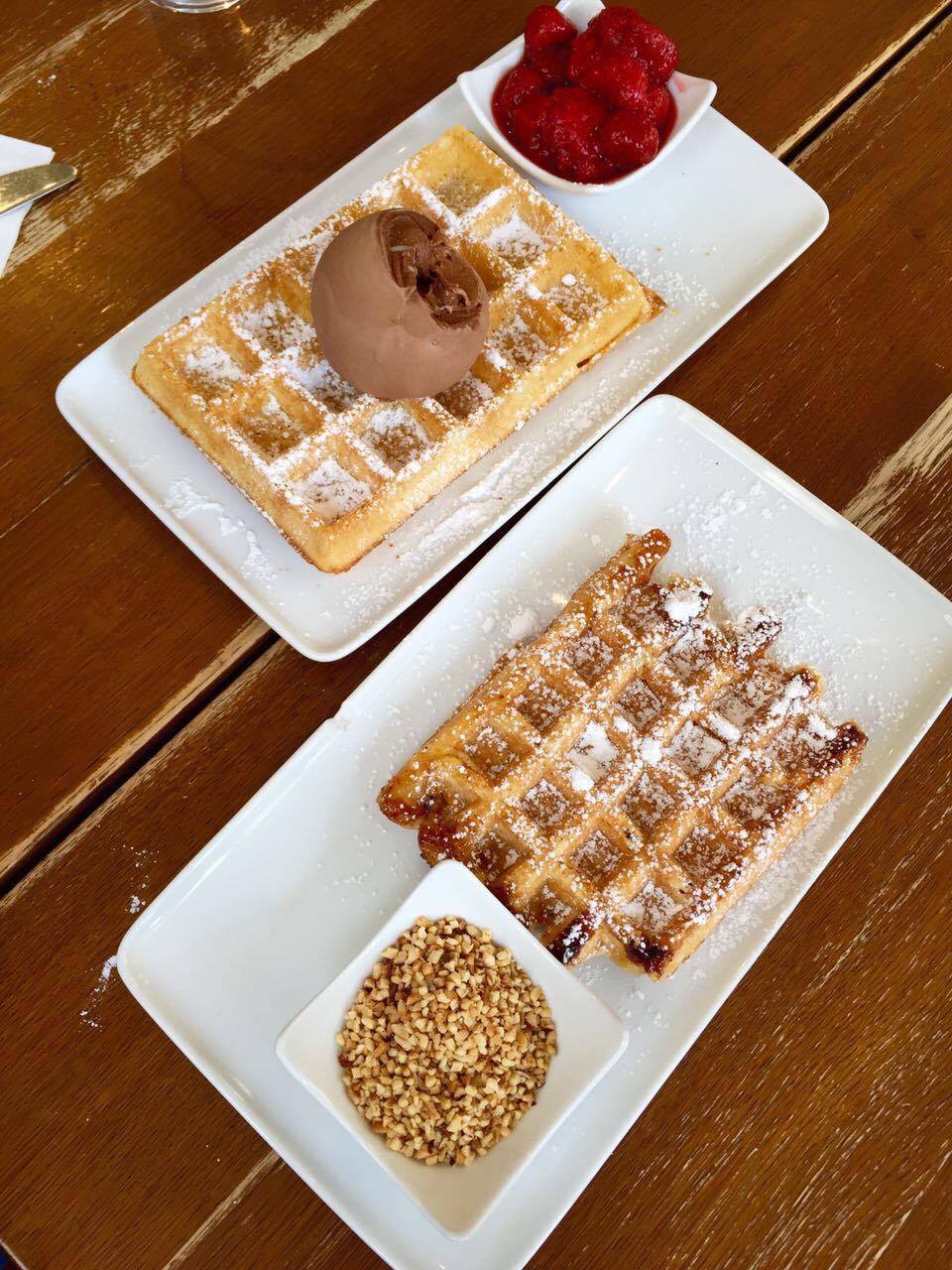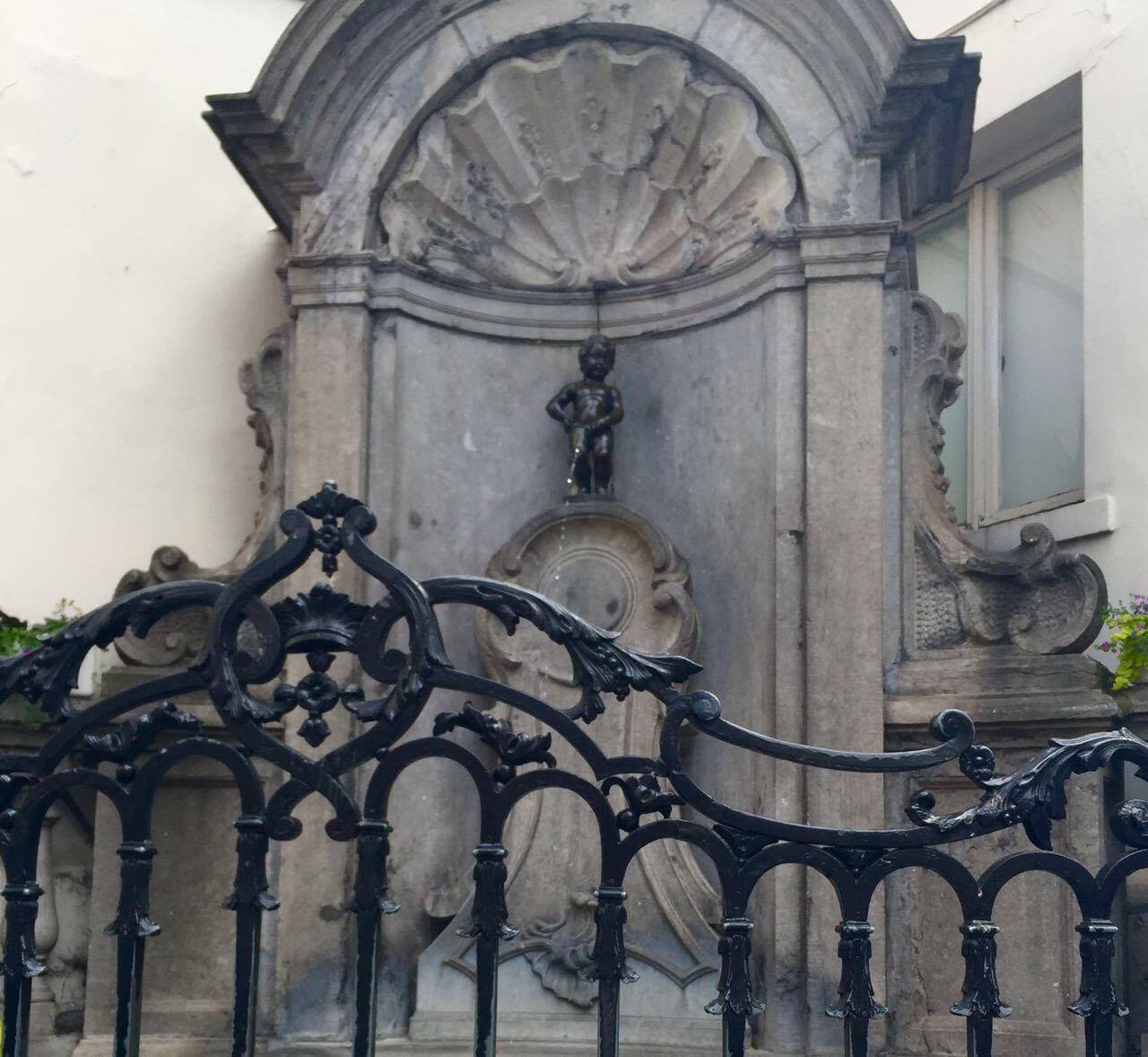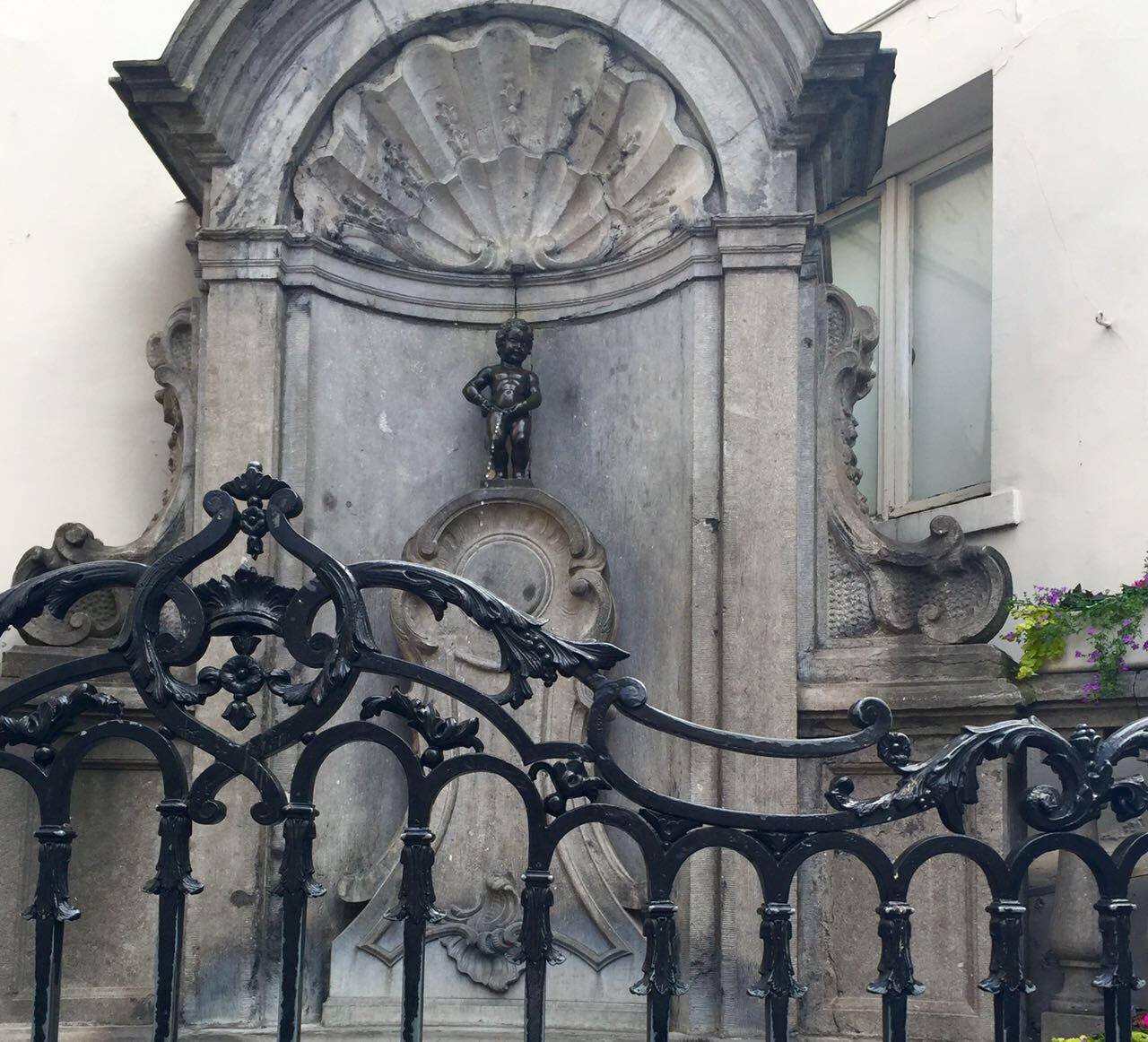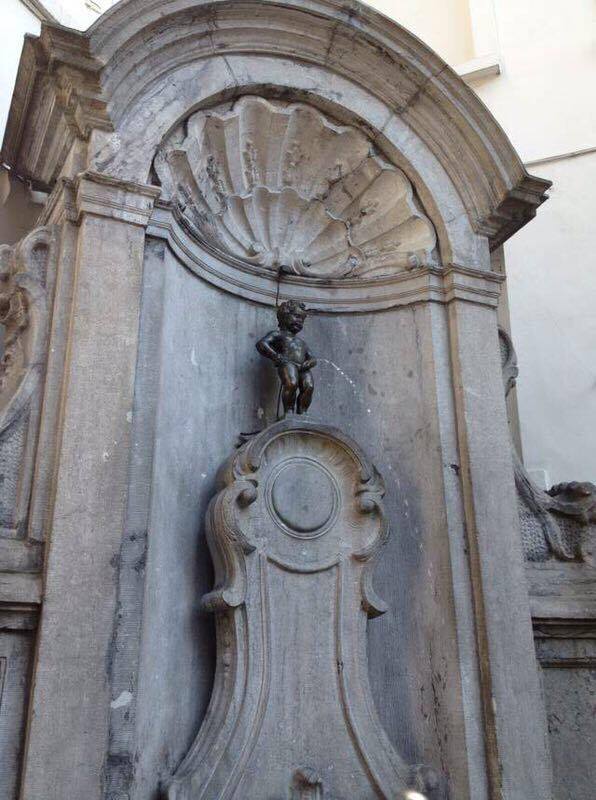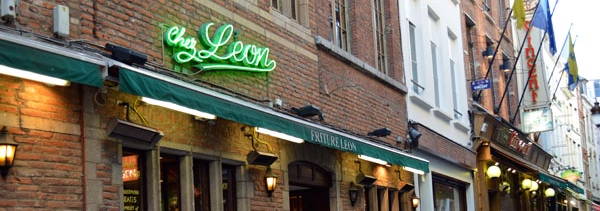I visited Brussels on a day-trip from Paris. Arriving in under three hours on the Thalys high-speed train, seeing the highlights of the city was more than manageable, though it may have resulted in a dearth of photographs for this post. You'll see that my brief day in the city was dominated by food, with pithy interludes of historical and cultural sights.
Much to my chagrin upon realizing it, my first stop in Brussels was for pommes frites. To be fair, we came across Fritland on our way to the Grand Place. (No, I made it a first stop on purpose, there's no excuse). Having been in business for over 40 years, this no-nonsense friterie serves up cones of short, uniform fries along with generous helpings of mayonnaise, in true Belgian fashion. Curiously, we discovered that the meat sticks (Brochette) and mixed meat sausages (Fricadelle) here were also delicious, if you don't mind piling on the calories (worth it, trust me).
I only have a picture of the remaining frites, meant to emphasize how really, truly good it was that I couldn't even wait for a snapshot first. Belgian fries are a particular favorite of mine because I have an affinity for well-done fries that are sometimes ever-so-slight burned to a crisp. Every fry at Fritland was like that. Heaven.
The Grand Place, or Grote Markt, is a square flanked by the Town Hall and Museum of Brussels. Unfortunately, during my visit there was rather some intense construction going on, and as such I couldn't get a panoramic photo. However, below are some highlights from the square.
The Tall Hall exemplifies gothic architecture and was built in the Middle Ages. It features a nearly hundred meter tower on its front, and the façade depicts various statues of nobles and saints.
The Museum of the City of Brussels, built in a similar timeframe as the Town Hall, was completed in 1455. Though its known as the Maison du roi (king's house) in French, no monarch has ever lived in the building.
Belgian waffles are a must, and rumor has it that Maison Dandoy has the best in the city. Adjacent to the Grand Place, the tea room has been serving this Belgium sweet since 1829.
There are two distinct types of belgian waffles. The brussels waffle (pictured, top) is likely what comes to mind when one thinks of waffles. Light and fluffy on the inside, a perfectly cooked waffle will have just the right of crispiness and crunch to the bite, which makes it a perfect balance with slightly melted ice-cream, and a side of strawberries in syrup. On the contrary, the liege waffle (pictured, bottom) is condensed and heavy, already sweetened in its batter. With sprinkling of powdered sugar and a side of crushed peanuts, its ready to be eaten without fuss nor hesitation.
Of the two, the liege waffle was my favorite due to its condensed nature, though I've always favored sweets that pack more savor per bite.
Manneken Pis, though small in its size (not a pun), is another cornerstone landmark in Brussels. Several times each week, the boy is dressed in different costumes. Its contentious what the boy actually symbolizes, but story range from him putting out a fire that would've destroyed the city and/or the king's house by peeing on it, or that he urinated on soldiers that attempted to lay siege to the city, but eventually failed.
Though less than a meter in height, the miniature statue has a lot of character, much like the city it symbolizes. From different angles, I get the feeling the little boy can be seen as defiant, aloof, or even determined. More than anything, I'd say he's probably proud. On any busy summer day, tourists around the world gather to see him peeing. Quite a feat, indeed.
A brief intermission in sightseeing drew us to rue Royale, where I delved into the world of Belgian chocolates without abandon. Beyond the famous but somewhat conventional Belgian chocolatiers such as Godiva, Neuhaus, and Leonidas, its in this city I discovered Mary, Pierre Marcolini, Galler, and Wittamer. Here's wishing I'd known of them earlier, given my love for chocolate.
If you have even a slight affinity for chocolate and find yourself in Brussels, I beseech you to visit the rue Royale, a haven for chocolatiers famed and local.
Mary has been established on the street since 1919; the helpful staff and beautiful decor makes their boutique a pleasure to visit even if one did not plan on buying any chocolates. Though, you'll change your mind once you step inside the store, of course.
Most famous for their pralines, all of the chocolates at Mary are made without preservatives or color additives, and recipes still remain original. Their tastefully overstated boxes and packaging give an extra flair to chocolates that need no such embellishment.
Pierre Marcolini embodies the importance of sourcing in chocolate production. Of Italian descent and born in Belgium, the founder and namesake of his brand traverses the globe to ensure only the best cocoa beans become his chocolates. Naturally, this is reflected in the price, but the flavor it yields vastly outweighs the pain a box of his elegant, minimalist chocolates may cost you.
Incidentally, the boutiques also create macaroons as well as marshmallows, for those who's interests lie in a different sort of bon bon.
Galler is most well-known for their chocolate bars, which come in packs and range across 22 distinct flavors.
Having known his dream of being a chocolatier since the age of 16, founder Jean Galler has made a study of the art of chocolate making since his youth. His brand is behind many of the innovations in the world of chocolate creation, and it is said Galler was the first to create a dark chocolate with 70% cocoa.
For simple, no-fuss chocolate goodness, look no further.
Having just celebrated its 100th anniversary in Brussels in 2010, this chocolatier has been in the same family for four generations, and their excellence continues to this day.
Wittamer rose to public acclaim in 1999, after the royal house commissioned the chocolatier to design and create the wedding cake of Prince Philippe and Mathilde, now the king and queen of Belgium. The resulting masterpiece needed four men to carry, captivated an entire nation, and capitulated the brand to fame.
As my day drew to a close in this picturesque city, I could not resist the urge to rest my feet and indulge in one last well known delicacy, moules-frites (mussels). Chez Leon, a short walk from the Grand Place, has been serving Brussels since 1893. Needless to say, it did not disappoint.
Mussels are plentiful in Belgium, originally a food for the lesser fortunate, due to its cheap price and relative abundance. Though the city is widely credited with putting combining french fries and mussels into a single dish, today the friteries around the city predominantly only serve their namesake dish, fries.
At restaurants around the city, one can still find mussels on nearly every menu. However, they are usually served alone, as is the case here. I suggest ordering mussels, au vin blanc, a perfect balance to the sea-heavy nature of fresh mussels.
Moules, without the frites.
And while we were at it, some oysters. No cocktail sauce in Europe, a squeeze of lemon is all you get to brave the pungent but delicious slurp of an oyster from its shell.
And that concludes my culinary journey through Belgium. I headed back to Paris with boxes of chocolates, and my head swimming with the thought of Belgian fries, and where I can find authentic transplants in New York.



